|
1/30/2018 0 Comments Introducing Mûre BlancheIntroducing Mûre Blanche – Fence Stile Vineyard and Winery's latest release available in early February only in our Tasting Room. Mûre Blanche is a blackberry Vidal Blanc dessert wine made using juice from late harvest 2017 grapes and estate-grown blackberries. Packaged in 375-milliliter bottles, this young wine was created to drink with the arrival of spring and not meant to be aged.
The grapes were harvested in November rather than September to develop character and sugar levels. Tasted fresh off the vine, the grape's juice yielded intense golden raisin notes and honeyed sweetness. Blackberries, harvested from Fence Stile's bushes last summer, were added to the Vidal Blanc grape crush. A wine bladder press was used to collect the fruit juices for this small-batch, limited-edition wine. After aging in a stainless steel tank, the unfiltered wine was bottled at the beginning of the New Year in early January. Mûre Blanche was purposely unfiltered to preserve the wine's character, resulting in a slightly hazy appearance. The addition of blackberry juice infused the wine with a cranberry-rose color. Delicate berry and cranberry flavors finish with subtle sweetness. We hope you'll pick up a few bottles of Mûre Blanche, a fresh and bold addition to our wine list for a limited time only. The wine, featuring original painted artwork on the label, is perfect to share over brunch, a romantic toast for Valentine's Day, as a gift, or to simply add vibrant color and joy to the muted colors of winter. Check our Facebook page and our website for more details on the February release of Mûre Blanche. Remember, this limited-edition wine is only available in our Tasting Room. These cases of Mûre Blanche won't last long.
0 Comments
Winter is a time to wind down, reflect, and spend time with others. Fence Stile Winery's Tasting Room offers the ideal venue for a leisurely wintertime getaway. Enjoy a brief excursion from the city and town, head past rolling hills and scenic country roads, and visit our winery just outside of Excelsior Springs.
Staying at The Elms? The hotel has a shuttle that will bring you to us. Once you have arrived, we invite you to do a wine tasting (five pours for five dollars) to explore our red, white, rosé and sparkling wines, ranging from dry to semi-dry to sweet. Our Tasting Room team will guide you through the wines to arrive at something you may enjoy by the bottle or glass. Ask about our newest limited-release wine. During winter, try a glass of warm mulled red or white wine to shake off the chill. Also, we have a delicious fall spice sangria that's hard to resist. When the temperatures dip, we have our fireplace available to keep you warm. Finally, order food from our Nibbles menu, featuring cheese, sausage, olives, nuts, bread, and more, if you care for a light bite. Guests may also bring food into the tasting room for a winter picnic. Want to bring a group for a private event? We can reserve tables, our Assemblage Room, and other space for a gathering. Email us at [email protected] with details and to receive information on options. Break that cabin fever and visit us at Fence Stile Vineyards and Winery. We have live music, wine cave tours, and other events. Check the calendar or our Facebook page for upcoming events. We'll see you soon! Fence Stile Vineyard and Winery owner Shriti Plimpton decided to leave the grapes on a few rows of Vidal Blanc during the 2017 fall harvest. Depending on how the grapes developed on the vine, she planned to have the grapes harvested later in the year. Juice from the late harvest Vidal Blanc grapes would be made into a new, limited-release wine for early 2018. Previously, Fence Stile used late harvest Vidal Blanc grapes to produce Ishq, a sweet dessert wine with a rich gold color and the flavor of golden raisin. However, this new wine would have its own identity, look, and character. Bird netting was placed over and around the rows of Vidal Blanc to preserve remaining fruit from birds and other predators prior to harvest. Long, heavy grape clusters hung on the vine until mid-November. As temperatures dipped, the vines dropped their leaves and no longer gained fuel from sunlight. The grapes, pale green-colored in summer, deepened in hue with a palette ranging from a deep green-gold to light purplish-bronze. The additional time on the vine enabled the grapes to build sugar level, or Brix, as well as develop its flavor and aroma profile. Picked off the vine, the grapes exhibited a concentrated flavor of caramel and hint of golden raisin. The bird netting was carefully rolled off the rows on a brisk November morning. The cool, gray day was a stark contrast to the warm, sunny harvest days in September, where valued volunteers helped picked grapes eight to ten weeks earlier. Wearing several layers of clothes for warmth, the team began the harvest and moved down the rows at a steady pace. The clusters were easier to spot since the vines bore no leaves. White five-gallon buckets, full of grapes were hauled to the winery production facility. Since the harvest yield was much smaller than fall harvest, a wine bladder press was used to press the grapes rather than the larger, high-volume press normally used on the crush pad. A slotted metal screen forms the cylindrical body of the tri-legged press. Grapes are packed inside the press around a bladder in the center. Water is pumped into the bladder so it expands and pushes, or presses, the grapes against the walls of the cylinder. Grape juice is expelled through the slotted screen and collected in a tray that drains into a storage container. In this case, a second fruit was also included in the grape crush – blackberries. Last summer, Fence Stile's team harvested blackberries from its bushes near Concord grapevines located just off the private patio behind the old winery tasting room building. The blackberries, frozen for preservation until November, were added to the crush. Bright magenta berry juice and grape juice trickled down the walls of the press. Wine from this juice was the culmination of planning, patience and development in 2017. The result is something to behold and taste – soon! Scheduled for release in early February 2018, Vidal Noir is a blackberry Vidal Blanc dessert wine. Fence Stile's newest release is a product of several seasons – summer's bounty of homegrown berries, a late fall harvest of grapes, and wine craft over winter. We're excited to release and share this limited-edition wine. Check back on Fence Stile's blog and social media for more details about the wine's appearance, flavor and bottling. As a limited-edition, small batch dessert wine that's meant to be consumed young rather than aged, Vidal Noir is a wine that won't last long on the shelves in our Tasting Room. 1/1/2018 4 Comments Grapevine Training and Pruning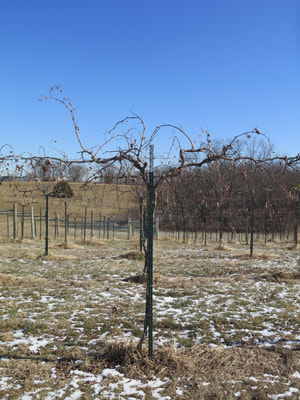 Grapevines require training during the first few years after planting to guide growth and optimize production. Even after they are established, grapevines need attention, care, and pruning at different stages of the seasons. During the winter transition between fall harvest and bud break in spring, leaves fall off the vines once temperatures drop and the weather turns cold. Bare grapevines require pruning and maintenance from January through March to remove dead wood and prepare for optimal growth in the following year. Spur Pruning The illustration below depicts several methods for training young grapevines and pruning. Fence Stile uses the spur pruning method on all cultivar varieties, such as Vidal Blanc, Vignoles, and Chambourcin. "The intent of pruning in general is to control the size of the vine, optimize the production potential of the vine, and to maintain the balance between shoot and fruit growth," vineyard manager Shawna Mull explains. "The decision on how to prune can be dictated by the cultivar. Some cultivar produce better or a more even crop by cane pruning or other types of pruning. Spur pruning creates a strong cordon over the long term." In the vineyard, the cordon is the part of the vine that looks like arms. A cordon refers to the vine's growth in a cord-like shape along a linear path that may be single or doubly split from the main vertical root vine. The cordon provides support for spurs, or shoots that grow from the vine and will produce fruit. A formula is used for each variety of cultivar, or type of grapevine such as Seyval or Chambourcin, to calculate how many nodes/buds will be left on each vine to produce the optimal amount of fruit it can ripen. "This number is a starting point as each vine is surveyed and treated as an individual," Mull says. "Ultimately, we are trying to achieve balance. We try to keep the spurs an even distance apart and balanced on both sides of the cordon. While making these decisions, we try to consider how each new shoot will affect the next as it grows. We try to alternate the direction to keep them from potentially creating too much shade for the neighboring spur and shoots. We always try to save the best cane that is also closest to the cordon at that spur interval. This keeps the fruit weight close to the cordon and reduces the chance of breakage during storms." Pruning in Orderly Fashion
Fence Stile conducts pruning in the vineyard in the order that the vines would be harvested. "The Vignoles would be first. They will also take the most time because of their vigor," Mull says. "The Seyval are the least vigorous so I would do the Vidal next and then Seyval. The Chambourcin and Concord are the latest harvests so they would be last of the established blocks." Newer blocks of planted vines, such as Cabernet Dore, at Fence Stile "have a lot of vines that will have strong cordons already so we can prune to one bud per spur," Mull says. "Some of them, along with the Crimson Cabernet, are just making it to the wire. We will prune to one bud below the wire or to the first green internode, if not to the wire yet. We want to promote vigor in these young vines to grow strong trunks and cordons so they will be ready in a couple years to bear their first crop." The amount of pruning that can be accomplished in a day depends on the weather. Also, pruning is specific to the cultivar's vigor and the number of canes. For example, the Seyval vines were not as vigorous as the Vidal and Vignoles. "It takes longer to prune a hearty Vignoles vine because there are more canes and the canes are larger. If the weather is good, we can spend more than an hour or so outside at a time," Mull says. "One person can average 100-plus Seyval vines in a day. It may take two days to prune 100 of our Vignoles vines." Pruning at Just the Right Time Timing matters in the pruning process before bud burst occurs. As the term suggests, bud burst denotes when the vines first produce springtime growth. New buds will burst as shoots grow and, in time, develop leaves and flowers. "If Stephen [Fence Stile's winemaker] and I start the first week of February, then we should be able to finish all the pruning by the end of March just in time for bud burst," Mull says. "We don't want to start pruning too early as the pruned plants become more susceptible to winter or cold injury. However, it is important to have all the pruning done before bud burst. The biggest fear is always that late spring frost that can cause bud damage." Different Goals for Different Grapes Pruning methods vary, depending on the type of grapevine and the goals for production. "We will leave more buds on the Vignoles because we want to make the vine produce more clusters," Mull explains. "Our Vignoles produce a large amount of foliage and can become unbalanced with vigor. They are hearty with large, strong trunks and cordons. If we leave five to six nodes per spur, then we will average about 60 nodes total per vine." Doing so insures the plant will focus its energy on clusters and not so much vigorous growth. Comparatively, the Seyval and Chambourcin are much less vigorous. "We will leave fewer nodes per plant so that we insure enough vigor or foliage to provide ample photosynthesis to ripen the crop load," Mull says. "In simple terms, more buds per plant equates to the more clusters you should get. Fewer buds make the vine think it must grow foliage to survive so clusters are fewer. We always want balance in the vine so there's not too much vigor and just the right amount of clusters for that vigor to ripen." Vine training Once planted, Fence Stile's vines are trained to grow into a double cordon formation. In other words, the upper cordons will form a T-shape at the top of the vertical root vine. The vine is tied to the cordon wire of the trellis for support. New fruit producing shoots will grow from the cordon spurs every spring. "At Fence Stile we use two types of double cordon training," Mull explains. "High wire cordon training is used for cultivar that naturally like to grow downward. We purposely prune their spurs to point downward." Other cultivar prefer to grow upward. "We use the Vertical Shoot Position to train the cordon and prune spurs pointing upward," Mull says. "The cordon is kept lower to the ground and the shoots are supported by the positioning wire built into the trellis, helping them to grow upward. The fruiting zones on either training system is kept close to the cordon at the supporting wire." Fence Stile uses the Scott Henry training system for Concord vines. This method allows for grape clusters to grow closer to the ground for easier access while harvesting. |
Archives
September 2021
Categories |
HoursWinter Hours December - February
Saturday: 11 am - 5 pm Sunday: 11 am - 5 pm Regular Hours: March - November: Thursday 3 pm - 7 pm Friday 12 pm - 8 pm Saturday 11 am - 8 pm Sunday 11 am - 5 pm |
Telephone - 816-500-6465 |

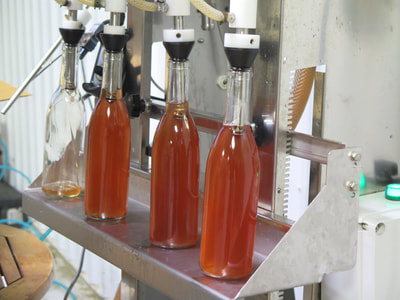
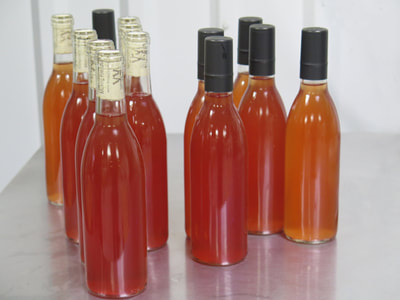
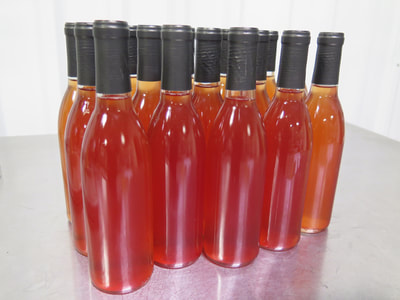
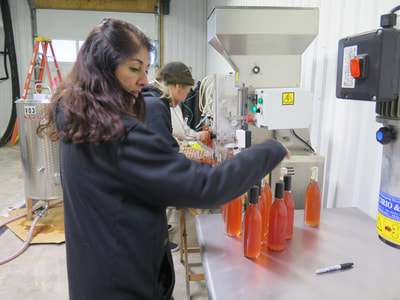
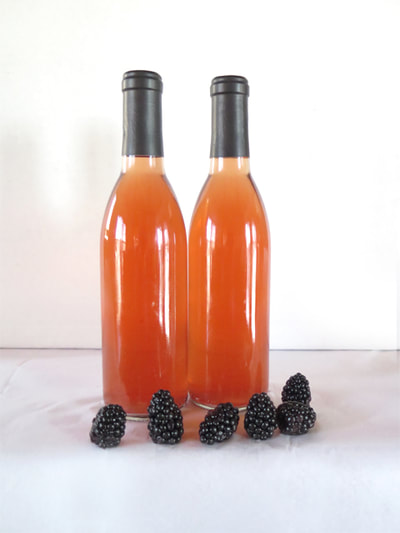
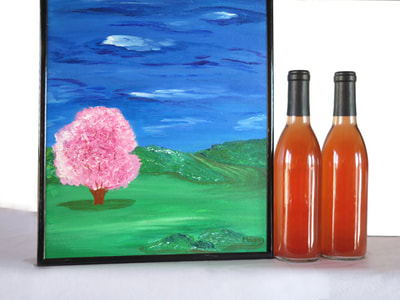
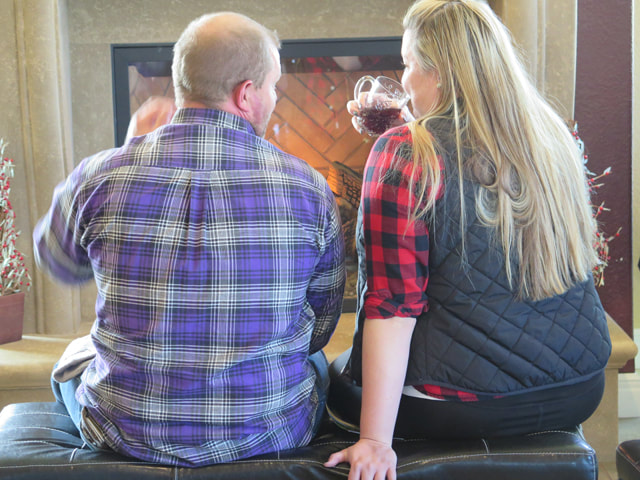
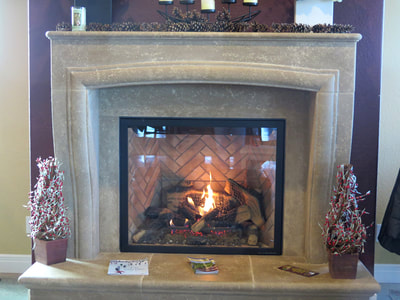
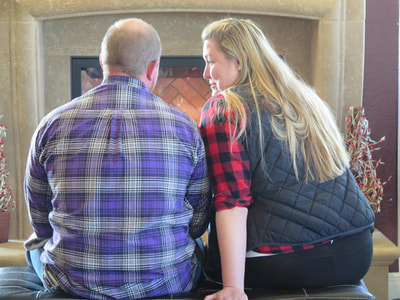
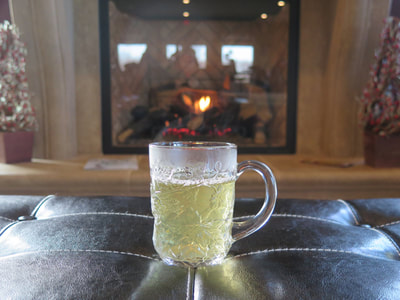

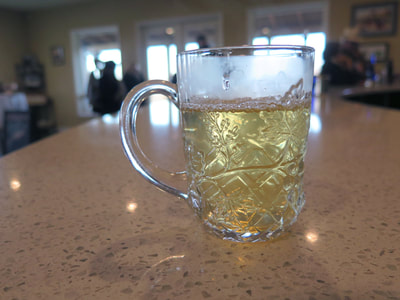
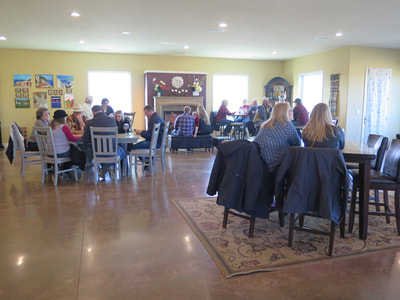
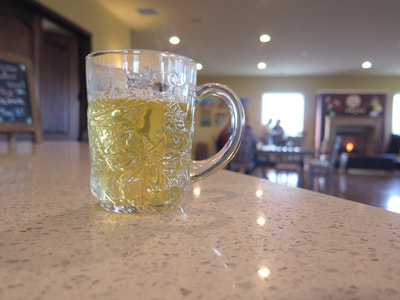
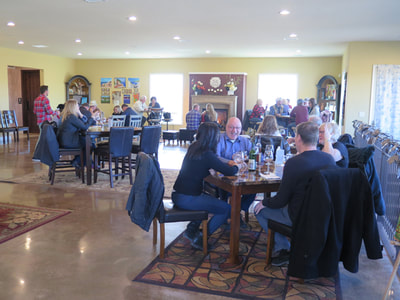
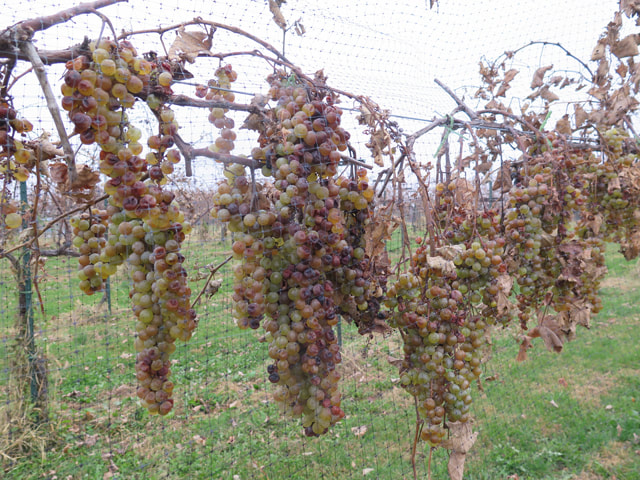
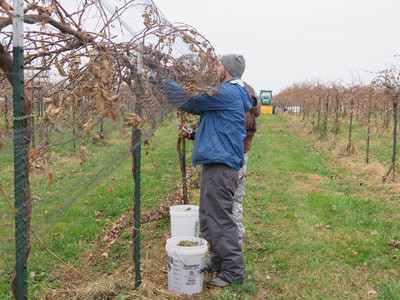
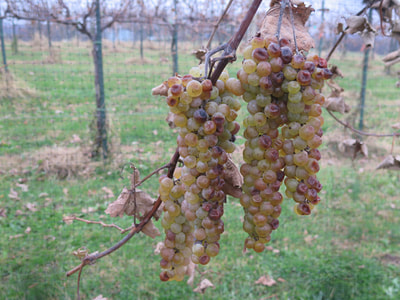
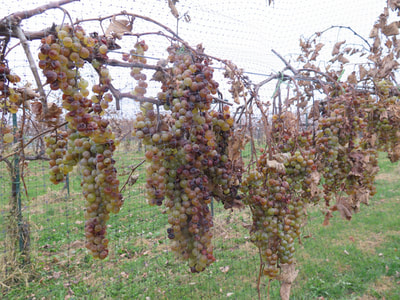
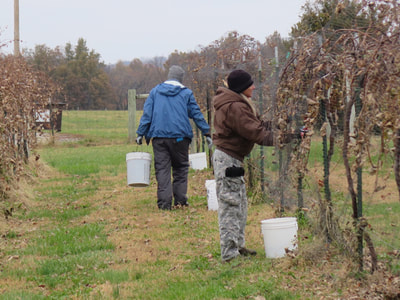
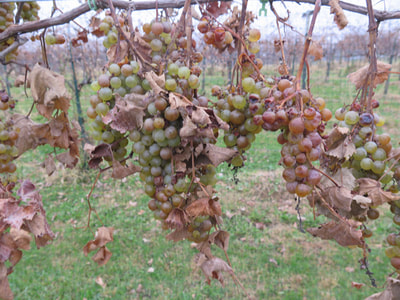
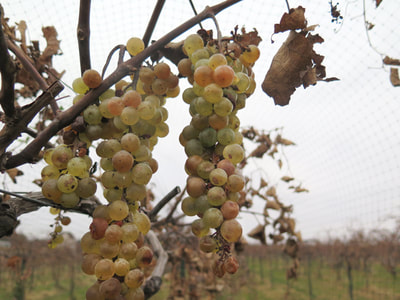
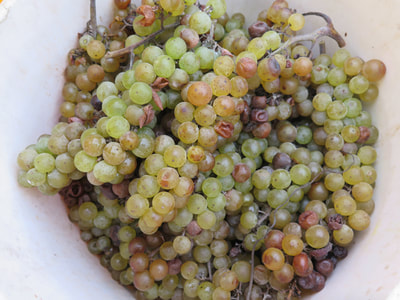
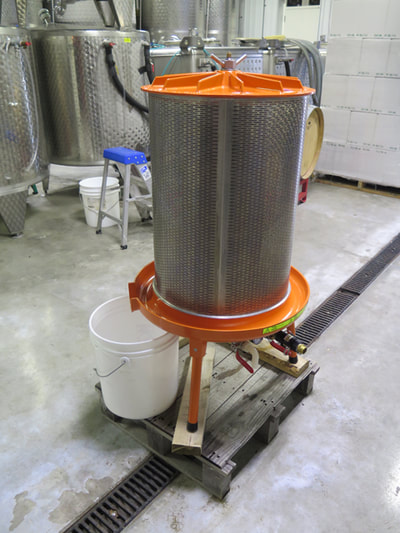
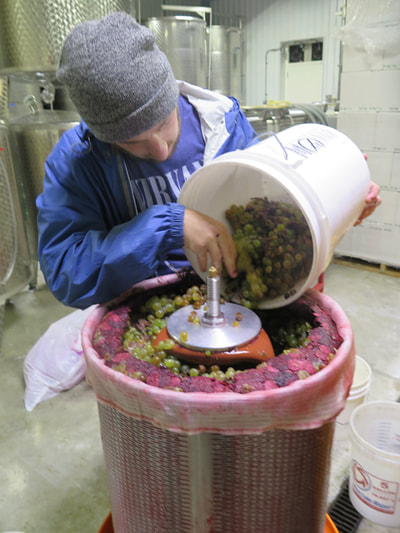
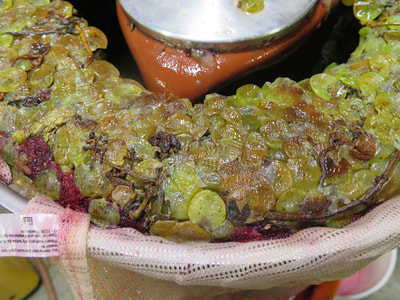
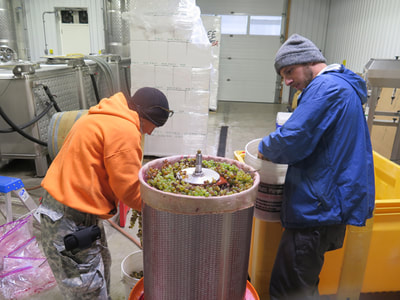
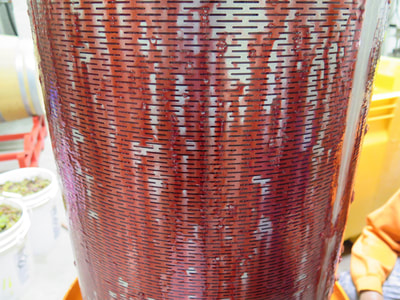
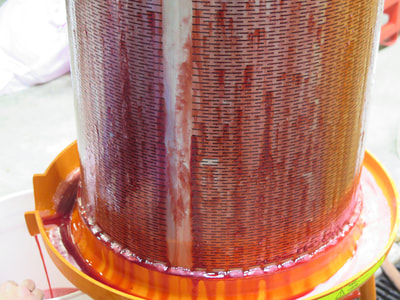
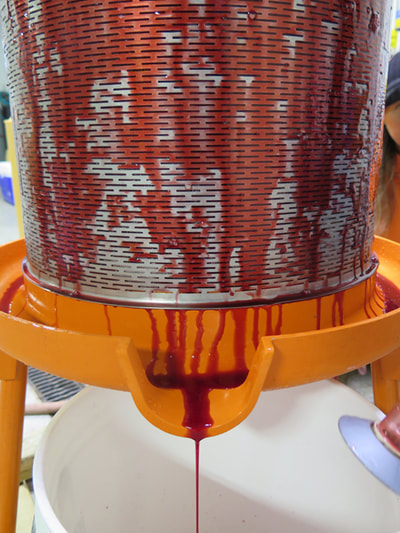
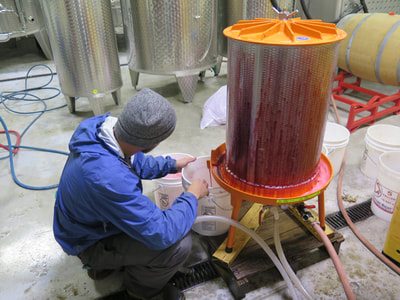
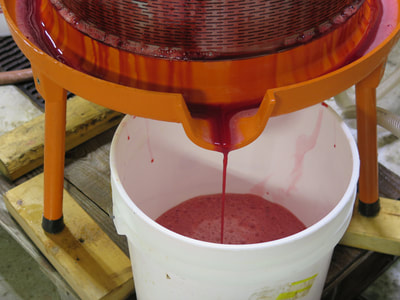
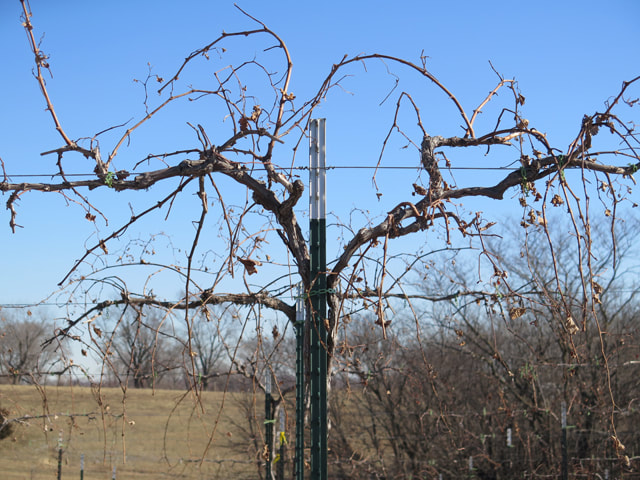
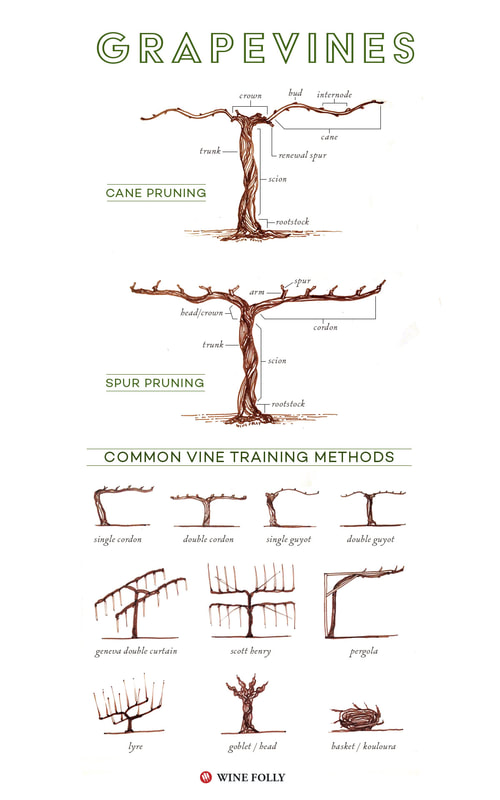
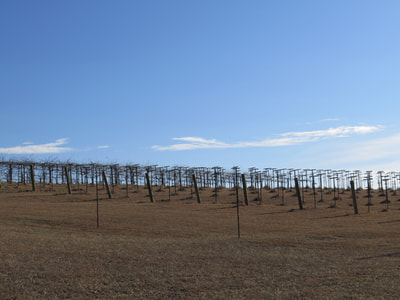
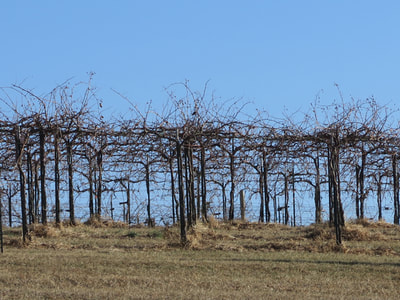
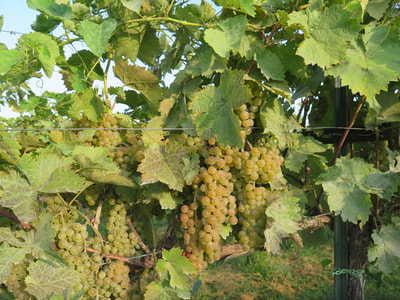
 RSS Feed
RSS Feed






